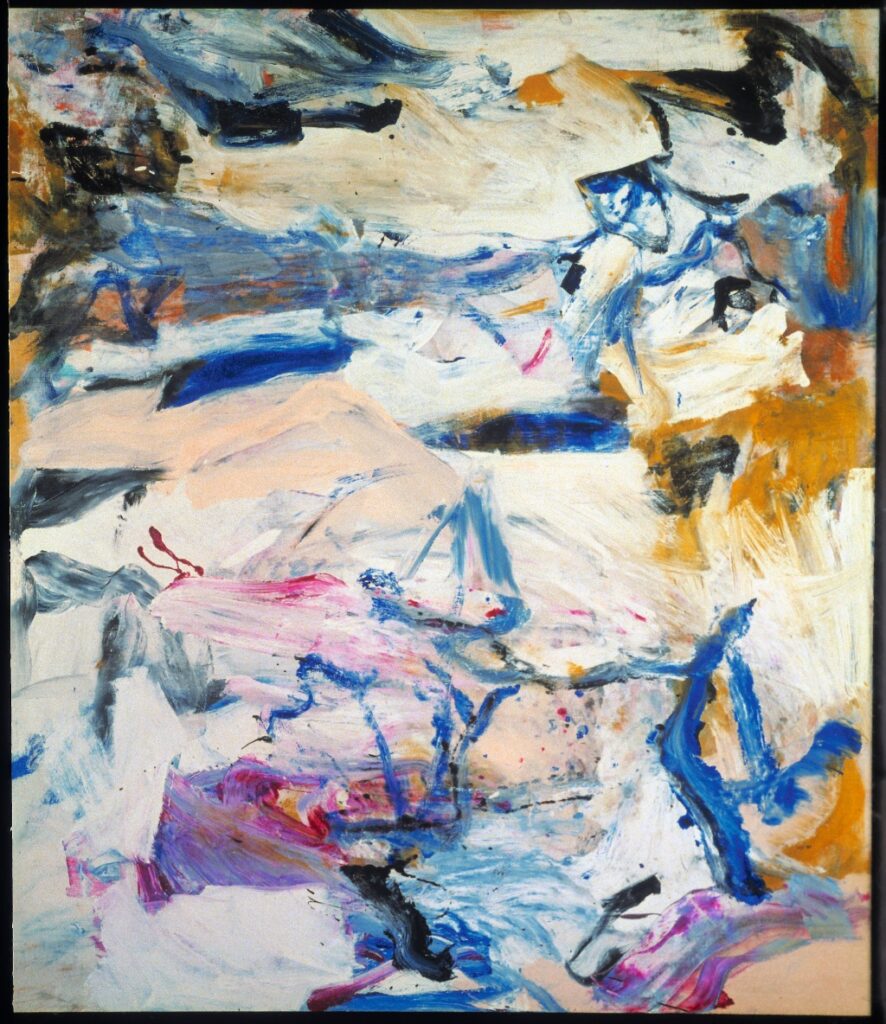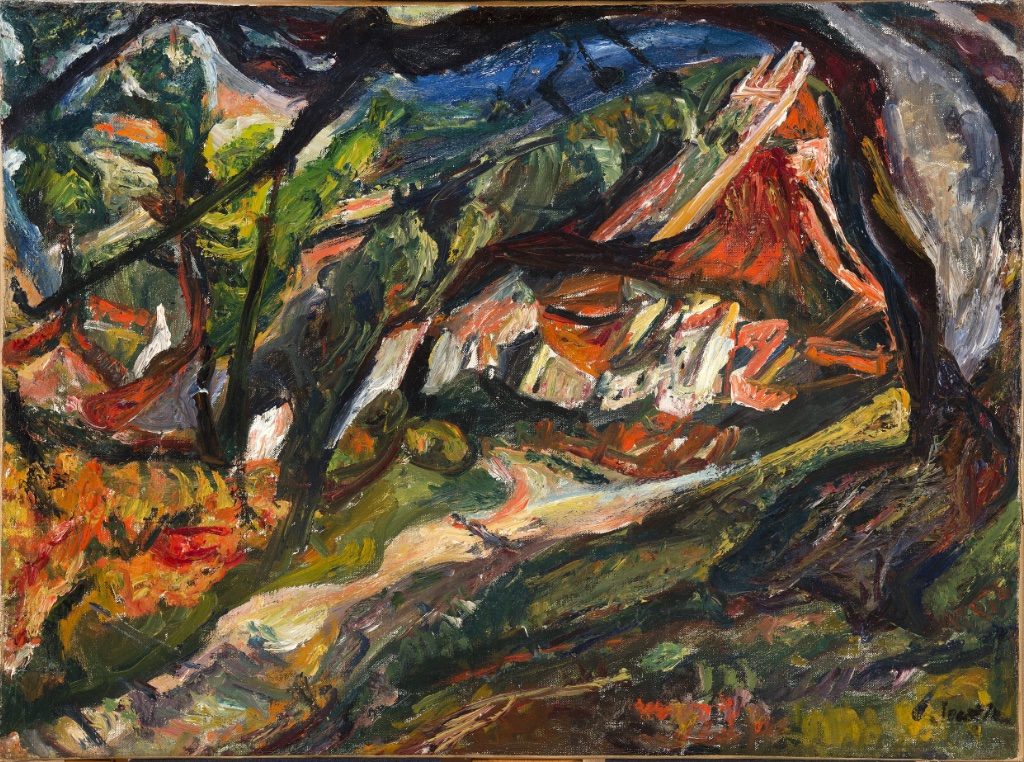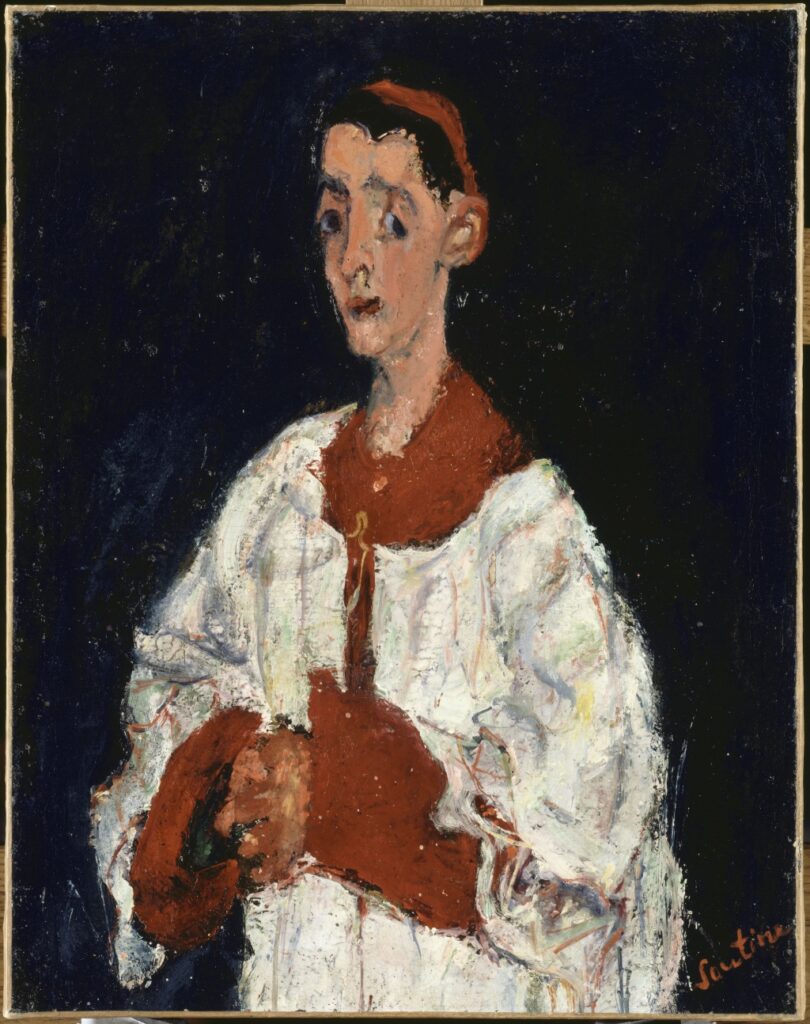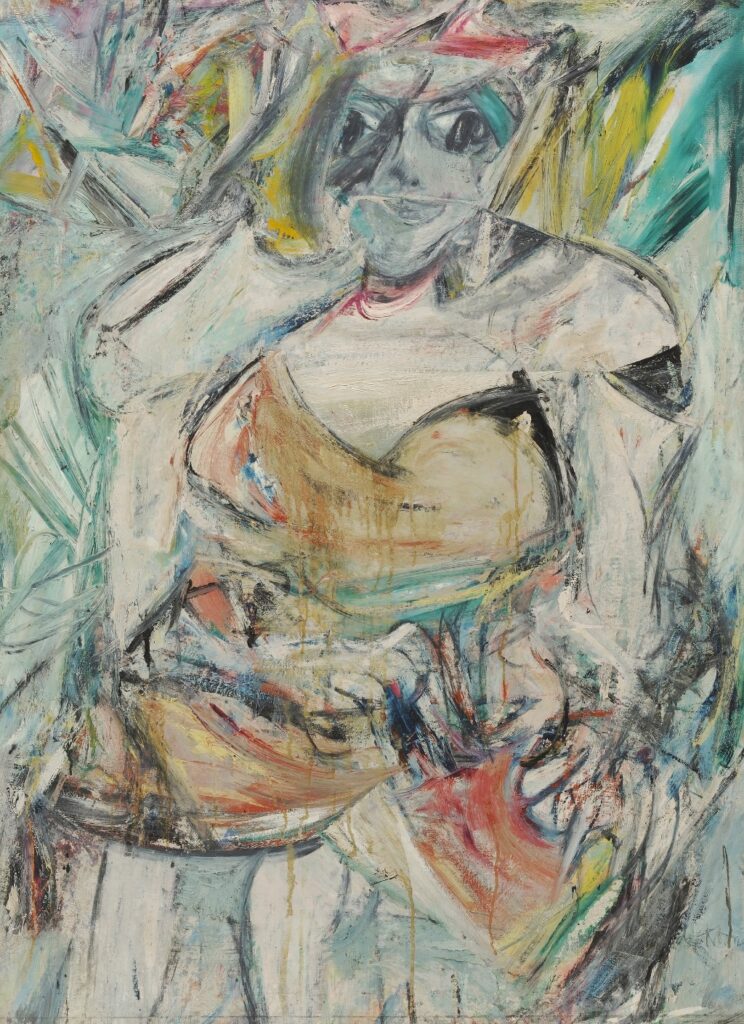
An illuminating exhibition at the Musée de l’Orangerie, “Chaïm Soutine/Willem de Kooning: Paint Made Flesh,” takes us on a trip from the strange, twisted figures and landscapes of Chaīm Soutine to the blowsy, almost frightening figures of women by Willem de Kooning.
Soutine (1893–1943), a Belarussian Jew who lived and worked in France for much of his career and came to a tragic end during World War II while hiding from the Nazi occupiers, is often credited with being a link between traditional painting styles and Abstract Expressionism. The exhibition makes the connection explicit through the work of de Kooning.
Soutine, although integrated into the Paris art scene and friends with Modigliani and other notable artists and dealers of the period, was a true original. Who else in his time was painting such strange, distorted figures? There is something totally fascinating about these twisted creatures, maybe because so much of their personality comes through in spite of the distortions.
Thanks in great part to the interest in his work of the collector Albert C. Barnes, Soutine became something of an art-world star in the United States between the 1930s and ‘50s. His work did not go unnoticed by the famed Abstract Expressionist de Kooning, a Dutch-American who saw exhibitions of Soutine’s work in the 1930s and again in 1950 and ’52.
The premise of the exhibition at the Orangerie is that seeing those works showed de Kooning, who was seeking a way to reconcile abstraction and figuration, considered at the time as two styles whose twain should never meet by prominent critics like Clement Greenberg, a way to achieve his goal. He later acknowledged the direct effect the Soutine paintings had had on his “Woman” paintings.

Soutine, for his part, was moving toward abstraction as early as 1921. In his paintings of Ceret, buildings and landscapes nearly lose their identity in a swirl of multicolored paint. In “Landscape with House and Tree” (1920-21), for example, gale-force winds seem to be blowing a village right off its foundations.

If you look closely at Soutine’s works, you see what a great painter he was. The white surplice, for example, worn by the choir boy in the 1927-28 painting shown here, is not at all white; it incorporates a world of colors: shades of blue, green, red, yellow, brown, etc.
De Kooning’s paintings have that same kind of intensity in their painterliness, but the palette is different. Soutine’s colors tend to be pure and bright – those reds in “The Groom” (1925), for example, and “The Upstairs Waiter” (c. 1927)! – while de Kooning’s lean toward pastels.

De Kooning once said, “I’ve always been crazy about Soutine – all of his paintings,” and I must agree, but I can’t say the same about the work of de Kooning himself, who is considered by many to be one the greatest painters of the 20th century. The colors are amazing, and I love many of his abstract works, like the beautiful “North Atlantic Light” (1977; pictured at the top of this page), but I find the female figures in his “Woman” paintings to be repulsive and monstrous, and this show did not make me warm to them. Someday maybe, someone will explain to me why they are so great.
Until then, I recommend this exhibition not only for the connection it makes between these two artists but also as mini retrospectives of the work of each, both painters who attacked the canvas in a kind of frenzy of rich color, rugged texture and intense feeling.
Favorite
Totally agree with you, Heidi. I love Soutine’s pulsating colors and distortions, but de Kooning’s women left me cold as well.